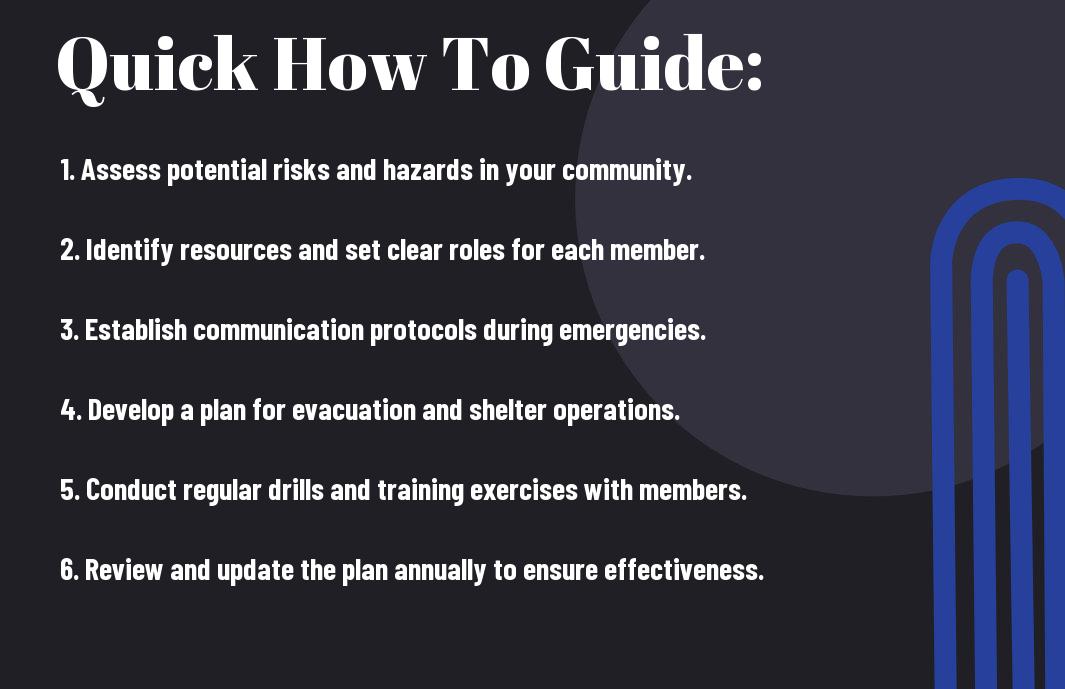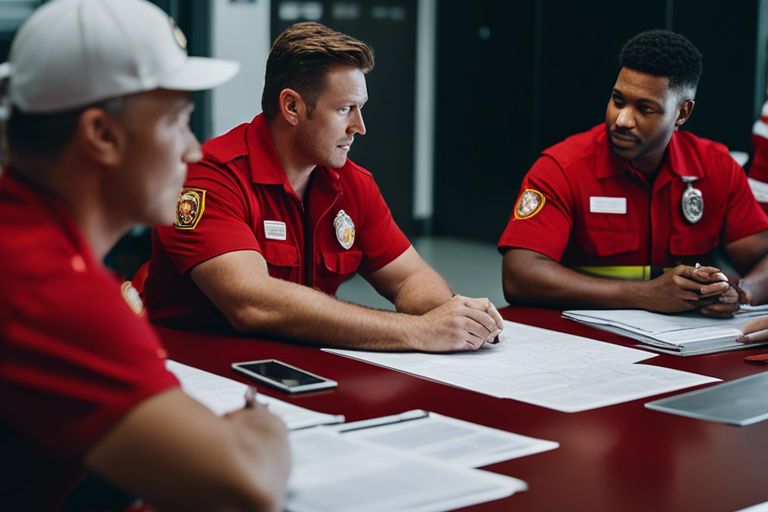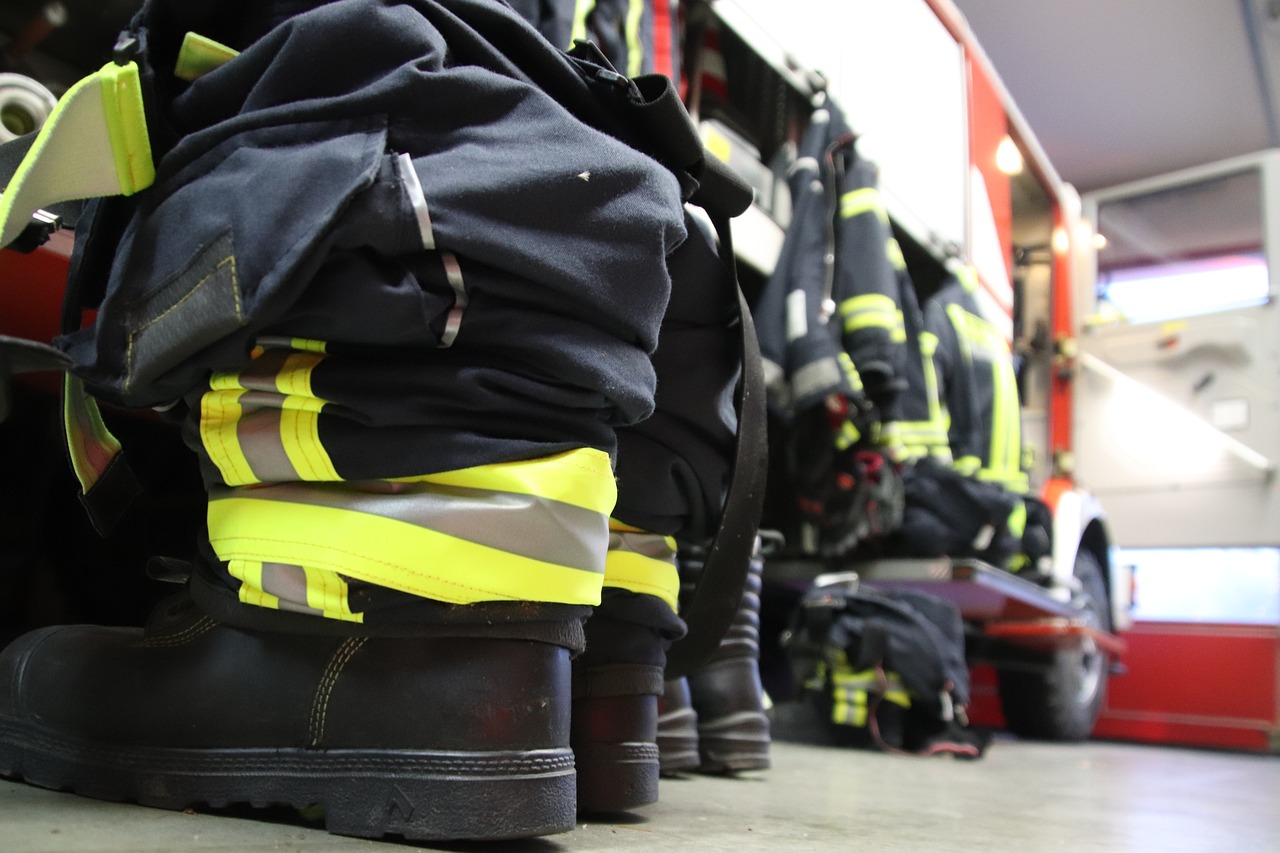This guide will walk you through the crucial steps to developing an effective emergency response plan for your volunteer fire department. By creating a detailed plan tailored to your community’s needs, you can improve response times, enhance safety measures, and save lives in emergency situations.
Understanding the Importance of an Emergency Response Plan
Your volunteer fire department plays a crucial role in the safety and well-being of your community. Having a well-developed emergency response plan in place is vital to ensure that your team is prepared to effectively and efficiently respond to any emergency situation that may arise. An emergency response plan outlines the procedures, protocols, and responsibilities that need to be followed during a crisis, helping to minimize the impact of the emergency and save lives.
Factors Contributing to Emergency Response Plan Effectiveness
- Clear Communication: Ensuring all team members understand their roles and responsibilities.
- Regular Training and Drills: Practicing various scenarios to improve response times and coordination.
- Resource Allocation: Having access to necessary equipment, tools, and resources to handle emergencies effectively.
Knowing that you have a structured plan in place that considers these factors can greatly enhance your team’s ability to respond to emergencies swiftly and effectively.
Consequences of Not Having a Plan in Place
Plan for the worst-case scenario, even if you hope it never happens. Not having an established emergency response plan can lead to confusion, chaos, and delays during an emergency situation. Without a clear plan in place, your team may struggle to coordinate their efforts, resulting in inefficient response and potential loss of life.
Response time is crucial in emergency situations, and not having a plan in place can significantly delay your team’s ability to provide assistance when every second counts. By recognizing the importance of an emergency response plan and implementing one for your volunteer fire department, you can better protect your community and improve your team’s overall effectiveness when responding to emergencies.
Identifying Risks and Hazards
Some of the best practices for developing an effective emergency response plan for your volunteer fire department involve identifying the risks and hazards specific to your area. One way to start this process is by conducting a risk assessment for your department. This involves evaluating potential threats and vulnerabilities that could impact your department’s ability to respond to emergencies. You can refer to the Disaster Preparedness Guide for a comprehensive framework on conducting a risk assessment.
Conducting a Risk Assessment for Your Department
With the information gathered from the risk assessment, you can prioritize planning and resource allocation based on the identified risks. This will help you develop targeted strategies to mitigate the most critical threats and enhance your department’s overall preparedness.
Identifying Potential Hazards in Your Response Area
Your volunteer fire department must also focus on identifying potential hazards in your response area. By assessing the specific risks related to your community, such as industrial sites, transportation routes, or natural disaster-prone areas, you can better tailor your emergency response plan to address these unique challenges.
Potential hazards in your response area can range from structural fires and hazardous materials incidents to severe weather emergencies and medical emergencies. By understanding these risks, you can proactively plan for the resources, equipment, and training needed to respond effectively to any situation that may arise.
Prioritizing Risks and Hazards
While you may identify numerous risks and hazards in your response area, it is imperative to prioritize them based on their level of impact and likelihood of occurrence. By prioritizing risks, you can focus your efforts on addressing the most significant threats first, ensuring that your department is prepared to handle the most critical situations.
Risks such as large-scale wildfires, industrial accidents, or mass casualty incidents should be considered **high-priority** and receive **special attention** in your emergency response plan. By **prioritizing** these risks, you can allocate resources efficiently and effectively, ultimately enhancing your department’s ability to protect your community in times of crisis.
Developing Your Emergency Response Plan
Unlike regular fire departments, volunteer fire departments face unique challenges when it comes to developing an emergency response plan. Your team may not always be on site, so it’s crucial to have a well-thought-out plan in place to ensure a timely and effective response to any situation that may arise.
Tips for Creating a Comprehensive Plan
- Identify potential risks in your community and prioritize them based on likelihood and impact.
- Involve team members in the planning process to gather diverse perspectives and ensure buy-in.
- Establish communication protocols and ensure everyone knows how to reach each other in case of an emergency.
- Create clear evacuation routes and practice drills regularly to ensure everyone knows what to do in an emergency.
- Thoroughly document your plan and make sure all team members have access to it when needed.
- Review and update your plan regularly to account for any changes in your team or community.
Though developing an emergency response plan may seem daunting, taking the time to create a comprehensive and well-thought-out plan will ultimately help your volunteer fire department be better prepared to handle any situation that comes your way.
Essential Components of an Effective Plan
Developing an emergency response plan involves several key components that are vital to ensuring your team can respond effectively in times of crisis. Your plan should include clear protocols for communication, evacuation, and incident management. Additionally, you should outline specific roles and responsibilities for each team member to ensure a coordinated response.
Assigning Roles and Responsibilities
On top of outlining the overall plan, it is vital to assign specific roles and responsibilities to individual team members. This ensures that everyone knows what their duties are in an emergency situation and can take swift action without confusion or delay.
Comprehensive training and regular drills can help reinforce these roles and responsibilities, ensuring that everyone on your team is prepared to act quickly and efficiently when needed.
Communication and Coordination
Many volunteer fire departments may not have a well-established emergency response plan in place. To ensure your department is prepared for any situation, it is crucial to develop a comprehensive plan that includes effective communication and coordination strategies. By visiting Emergency Preparedness resources, you can gather valuable insights and templates to help you create a plan tailored to your department’s needs.
How to Establish Effective Communication Channels
Any successful emergency response plan relies heavily on clear communication channels. Ensure that you have a system in place to quickly disseminate information to all members of your department. This can include establishing a chain of command, utilizing radios or other communication devices, and setting up regular training sessions to practice communication protocols. **Clear and prompt communication is necessary during emergencies and can make a significant difference in how effectively your department responds to a crisis.**
Coordinating with Other Emergency Response Agencies
Assuming your volunteer fire department may need to work alongside other emergency response agencies during a large-scale incident, it is vital to establish relationships and communication channels beforehand. **Coordinating with other agencies can help streamline response efforts and avoid confusion during critical situations.** Ensure that you are familiar with the roles and responsibilities of each agency and practice coordinated exercises to improve interoperability.
Notifying the Public and Media
Another crucial aspect of your emergency response plan is **notifying the public and media in a timely and accurate manner.** Develop protocols for sharing information with the community, including social media updates, press releases, and designated spokespeople. **Transparency and timely communication with the public can help maintain trust and ensure accurate information is disseminated during emergencies.**
Coordinating **with other agencies, effectively communicating with your team and the public,** and practicing coordinated response efforts are necessary components of a well-rounded emergency response plan for your volunteer fire department. By prioritizing communication and coordination, you can enhance the effectiveness of your department’s response to emergencies and better serve your community.
Training and Drills
Despite the inherent risks that come with being a volunteer firefighter, proper training and regular drills can help you and your team be better prepared to handle any emergency situation that may arise. Training and drills are vital components of developing an effective emergency response plan for your volunteer fire department.
How to Develop a Training Program for Your Volunteers
To ensure that your volunteers are adequately prepared for any emergency, it is crucial to develop a comprehensive training program. This program should cover basic firefighting techniques, first aid, communication protocols, and any specific procedures relevant to your community. Utilize a mix of hands-on training, classroom instruction, and online courses to provide a well-rounded educational experience for your volunteers.
Conducting Regular Drills and Exercises
To reinforce the skills learned in training and ensure that your team can perform effectively under pressure, conducting regular drills and exercises is vital. These drills should simulate various emergency scenarios, such as structure fires, car accidents, or hazardous material spills. By practicing these scenarios regularly, you and your team will be better equipped to respond swiftly and safely when a real emergency occurs.
Training and drills are not only about developing technical skills but also about fostering teamwork and communication among your volunteers. By working together during training exercises, your team can build rapport, trust, and cohesion, which are crucial elements in ensuring a smooth and coordinated response during an emergency.
Evaluating and Improving Your Plan
Any emergency response plan is only as good as its ability to adapt to changing circumstances and lessons learned. Regularly evaluate your plan by soliciting feedback from your volunteers, conducting after-action reviews following drills or real emergencies, and identifying areas for improvement. Make necessary revisions to your plan based on this feedback to ensure that it remains relevant and effective.
Another crucial aspect of evaluating and improving your plan is to stay informed about the latest industry best practices and technologies. Attend training seminars, conferences, and networking events to learn from other fire departments and experts in the field. By staying proactive and continuously seeking ways to enhance your emergency response plan, you can better protect your community and your fellow firefighters.
Equipment and Resources
Identifying Essential Equipment and Resources
Now, to ensure your volunteer fire department is prepared for any emergency, you need to identify the vital equipment and resources required for effective responses. This includes vehicles such as fire trucks, ambulances, and utility vehicles, as well as firefighting gear, medical supplies, communication devices, and tools for various rescue operations.
Maintaining and Upgrading Your Equipment
One way to ensure the effectiveness of your emergency response plan is by regularly maintaining and upgrading your equipment. Regular maintenance schedules for vehicles, checking and replacing firefighting gear, and ensuring medical supplies have not expired are crucial steps to take. Additionally, staying up to date with the latest technology and equipment advancements can enhance the efficiency of your operations.
Equipment that is well-maintained and up to date can make a significant difference in the outcome of emergency situations. Your ability to respond quickly and effectively depends on the condition of your equipment and resources.
Securing Funding and Support
Upgrading your equipment and resources can be a costly endeavor, but it is vital for the safety and effectiveness of your volunteer fire department. Securing funding through grants, donations, fundraisers, and community support is crucial. Additionally, building strong relationships with local businesses and government agencies can provide ongoing support for your department.
It is important to prioritize securing the necessary funding and support to ensure your volunteer fire department has access to the resources needed to respond to emergencies effectively. Your community’s safety relies on your ability to maintain and upgrade your equipment.

To wrap up
As a reminder, developing an emergency response plan for your volunteer fire department is crucial to ensure that your team is well-prepared to handle any situation that may arise. By following the steps outlined in this guide, you can create a comprehensive plan that takes into account the specific needs and resources of your department.
Remember to regularly review and update your plan to reflect any changes in personnel, equipment, or procedures. By staying proactive and continuously improving your emergency response plan, you can help keep your community safe and secure.



